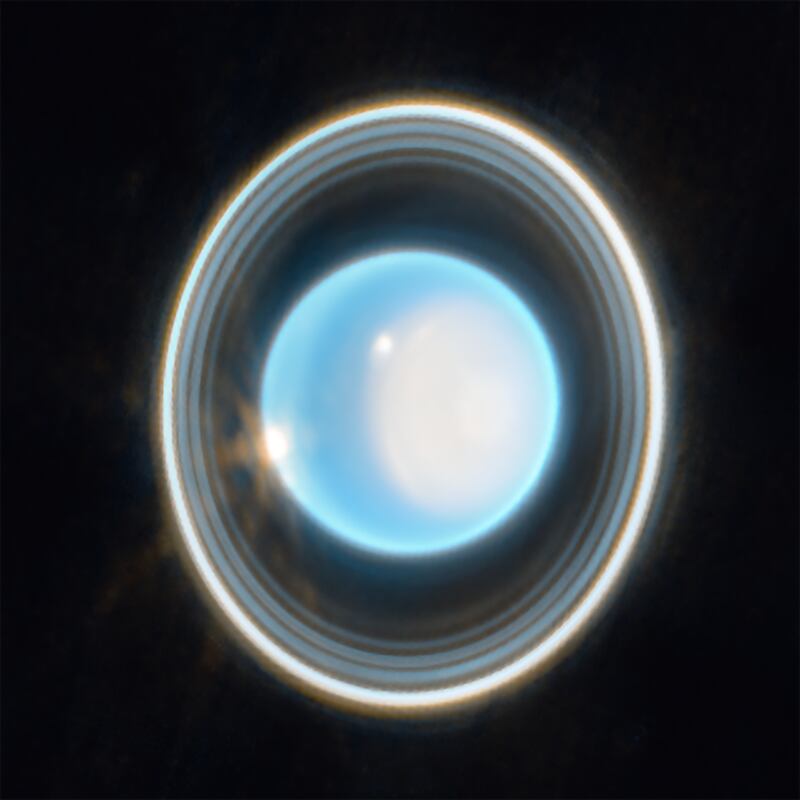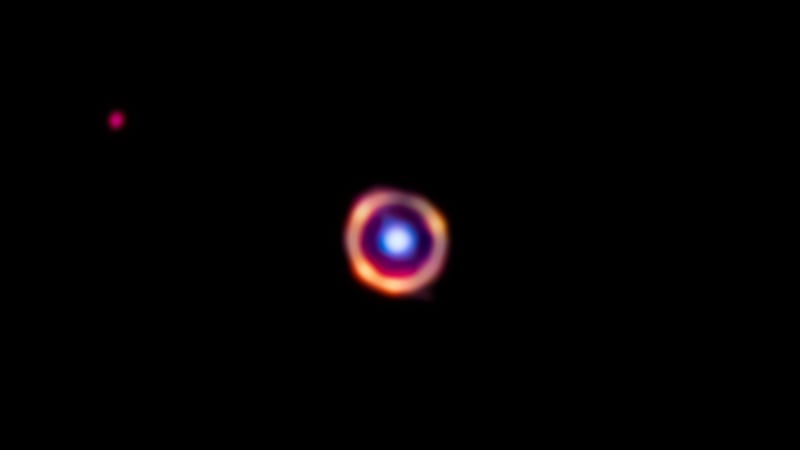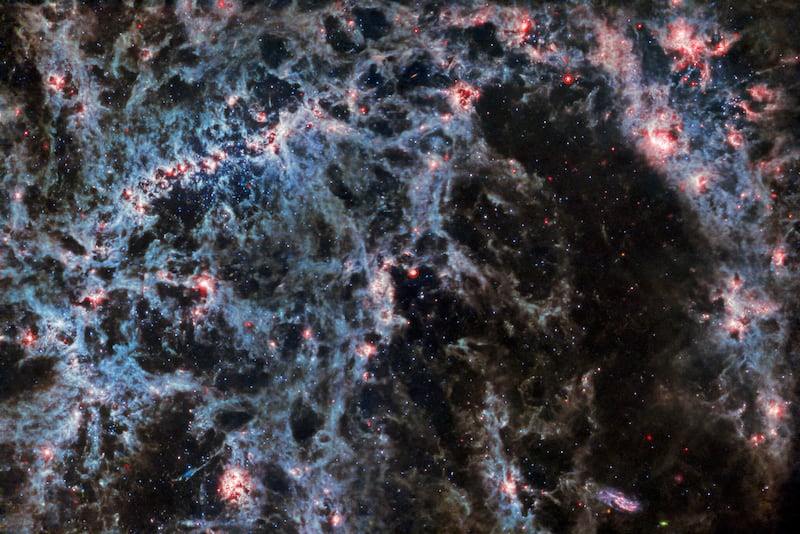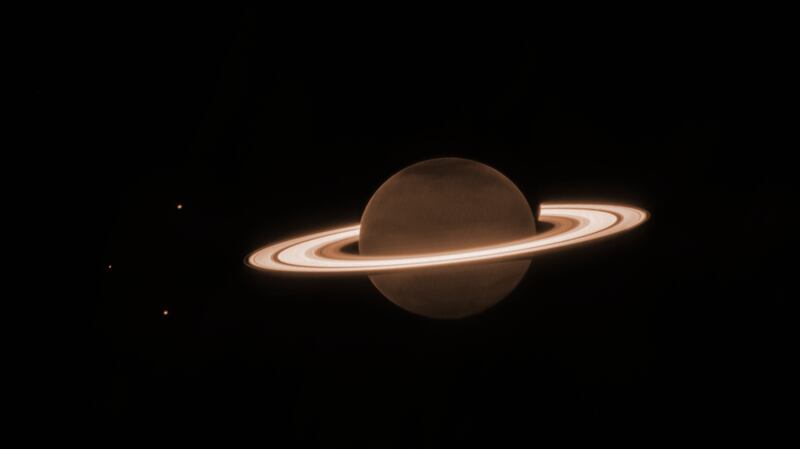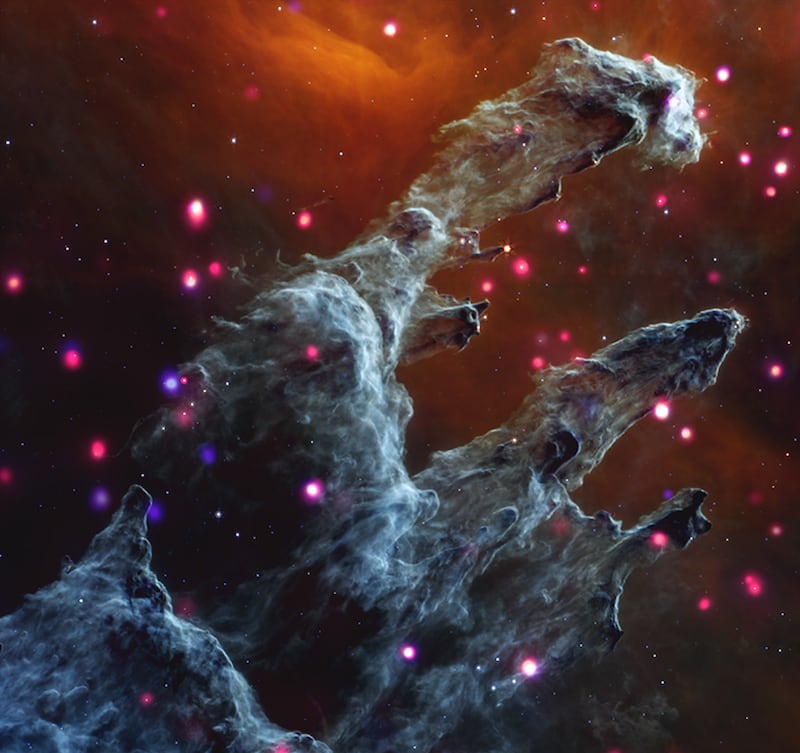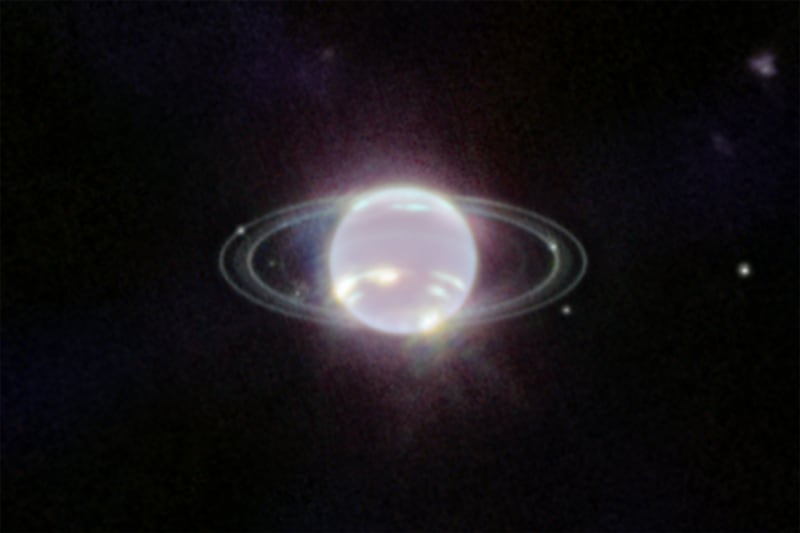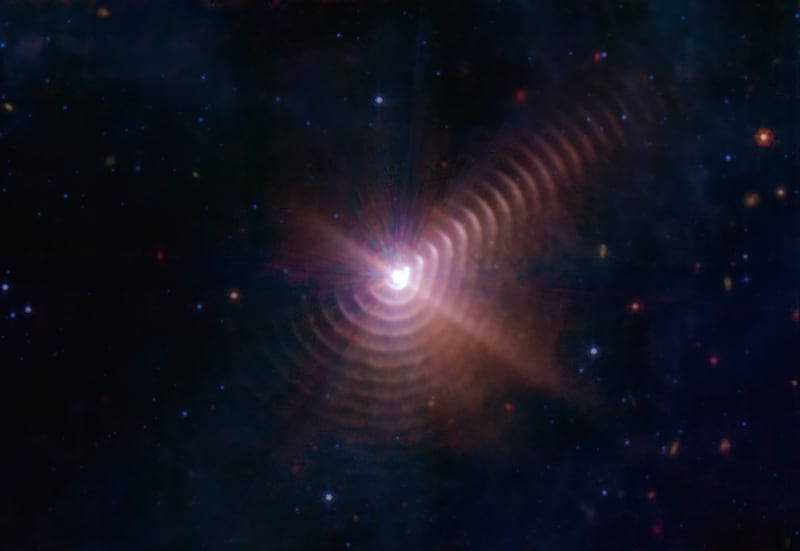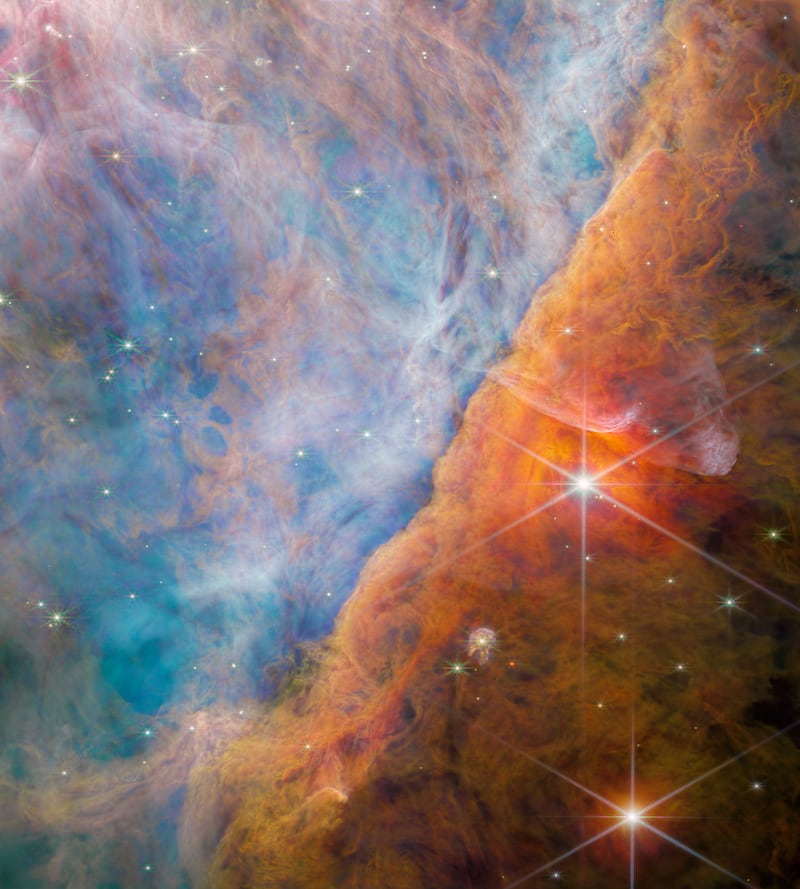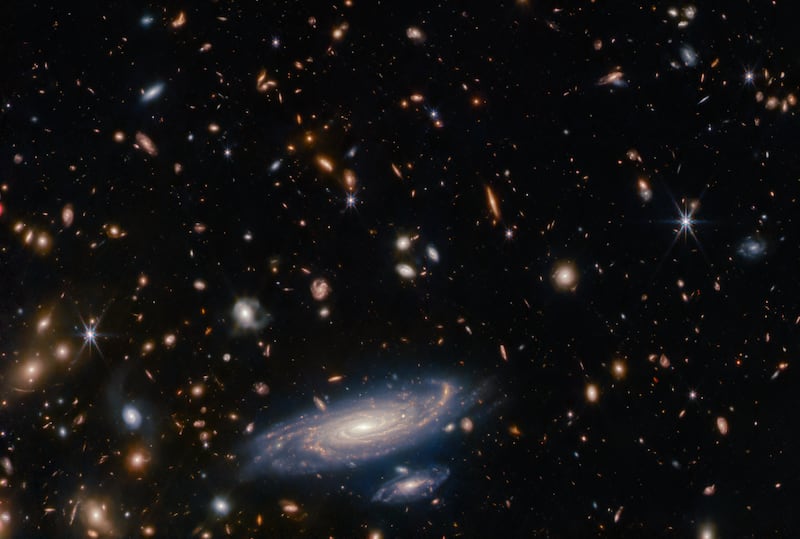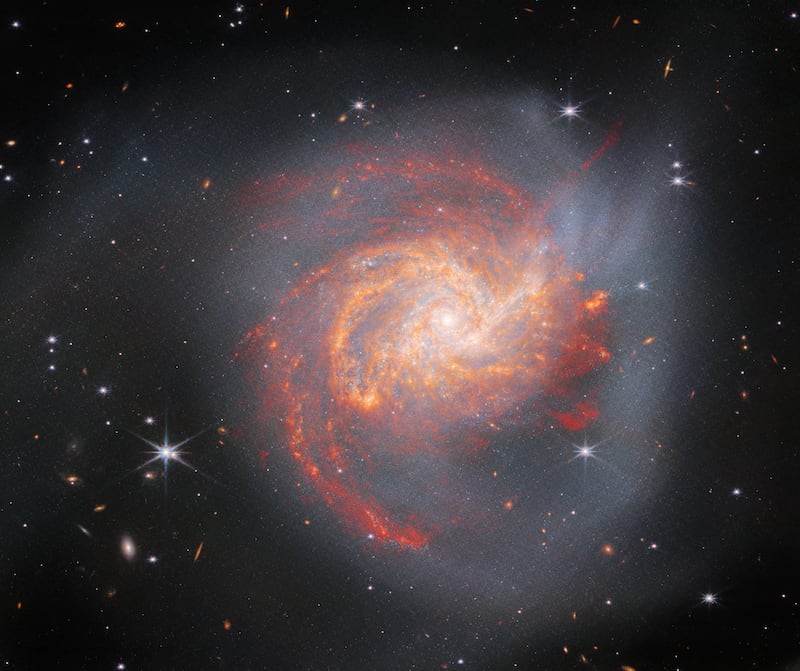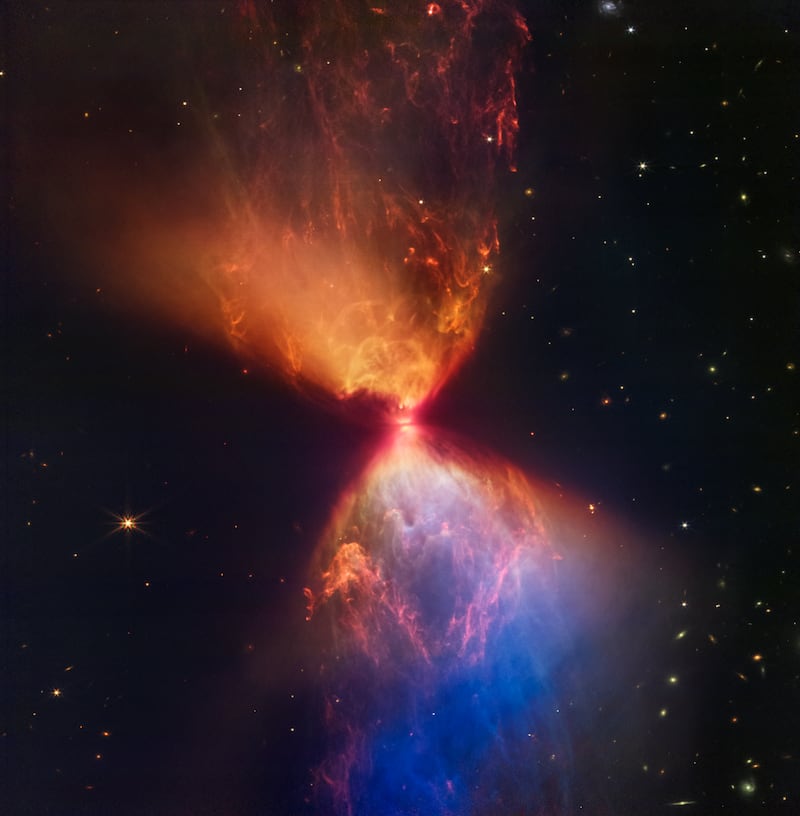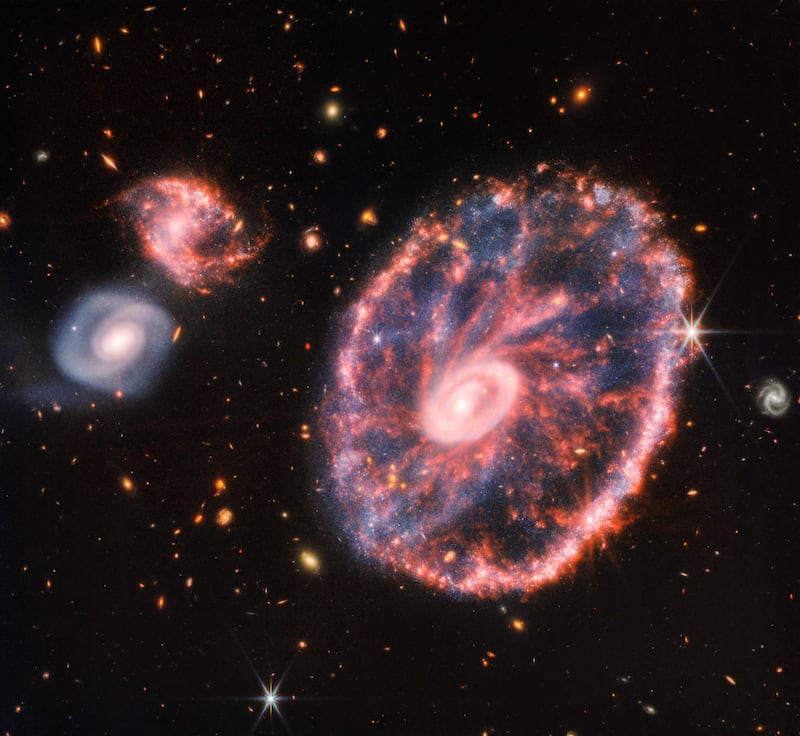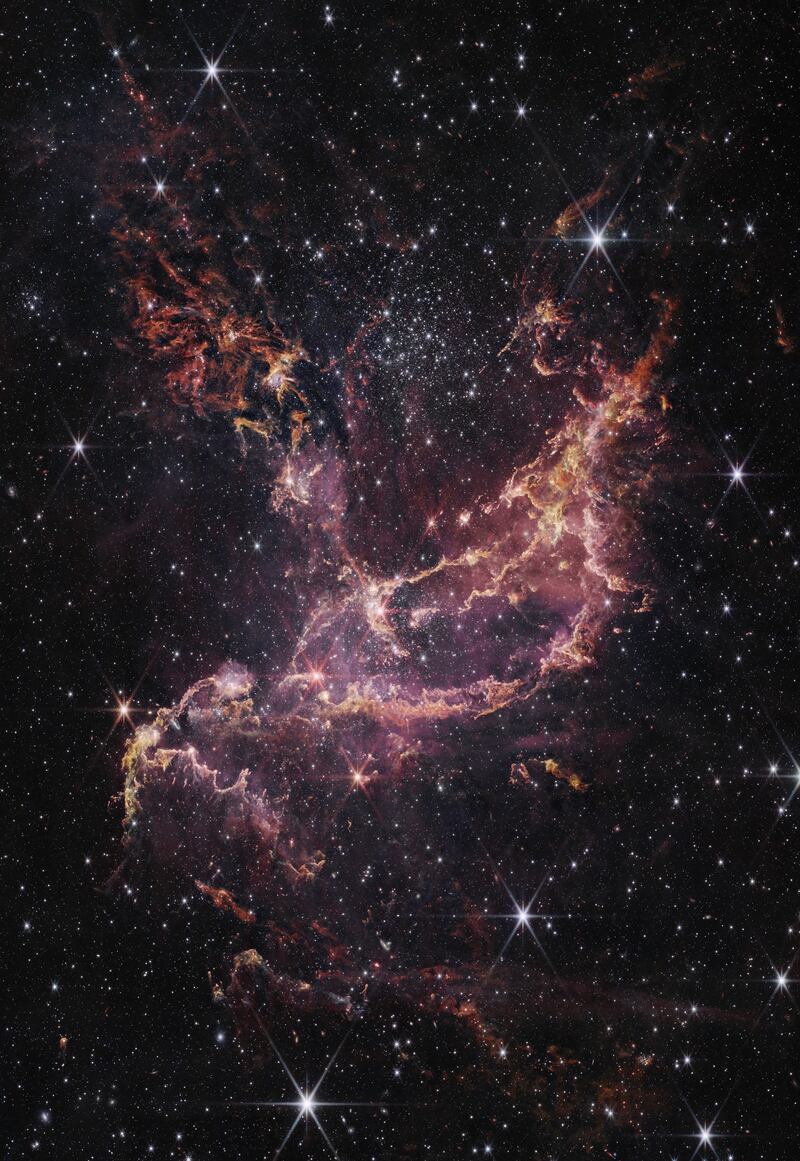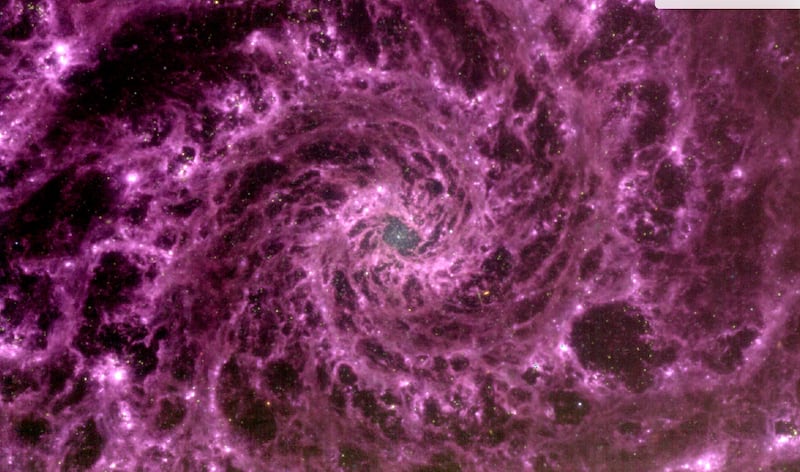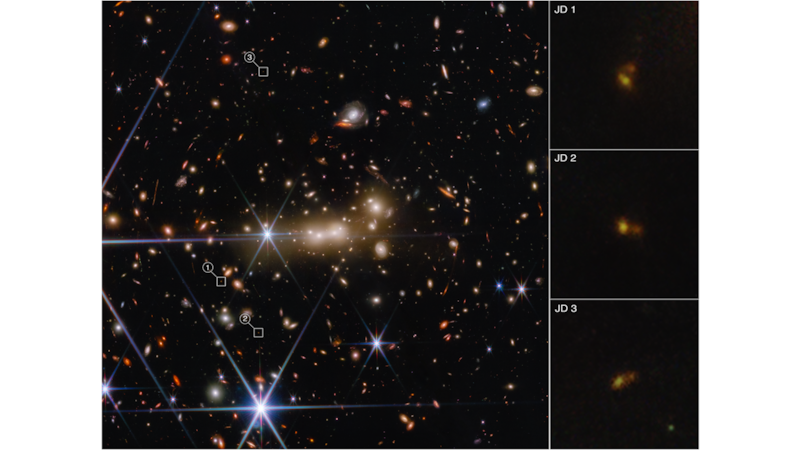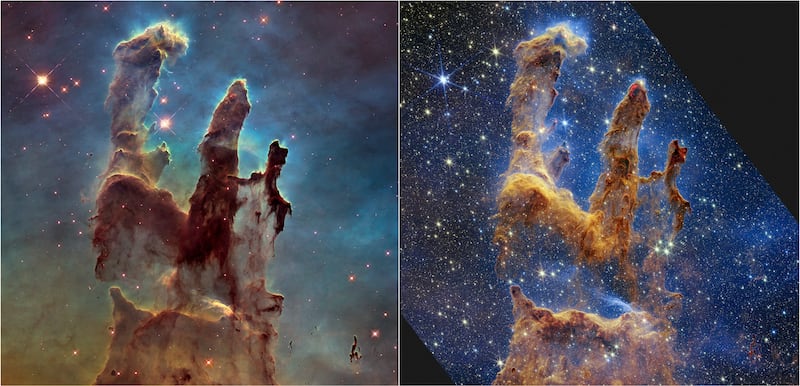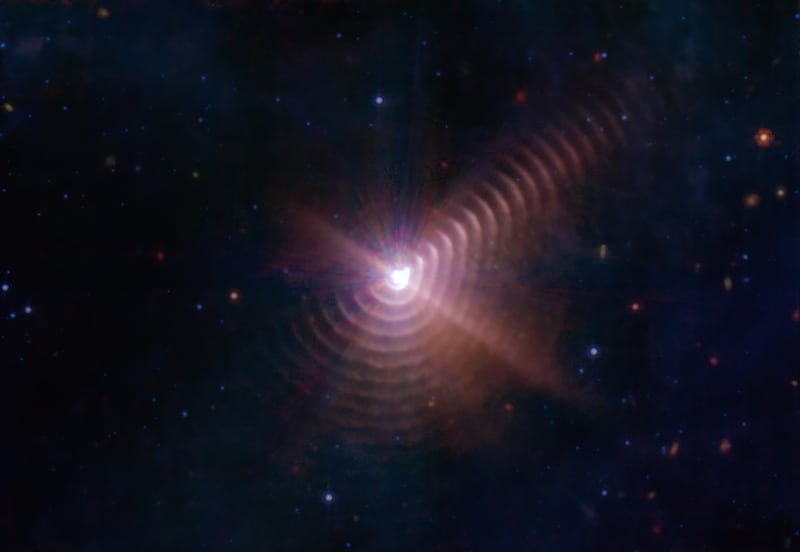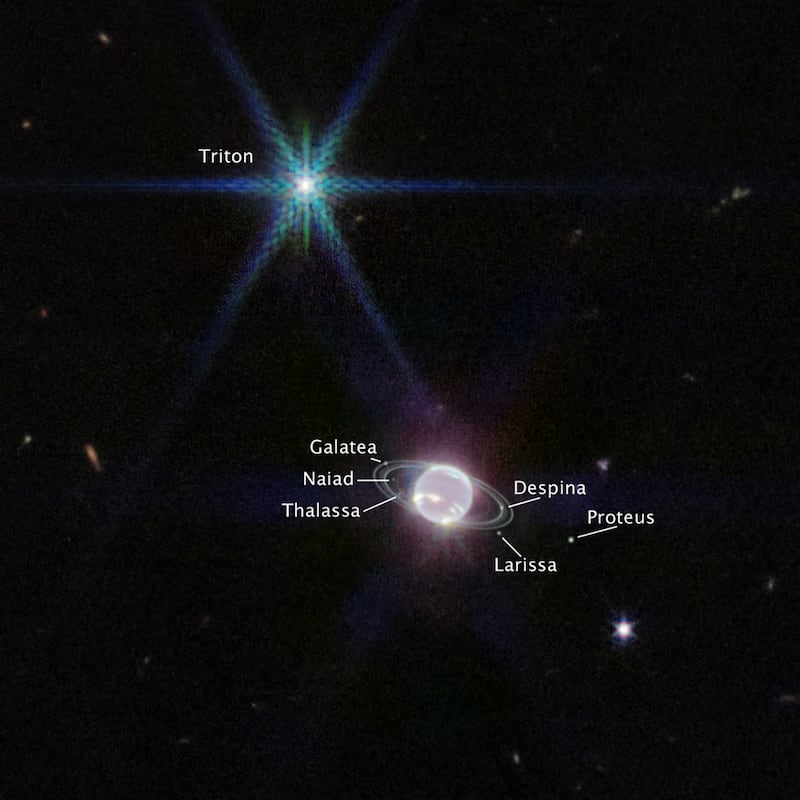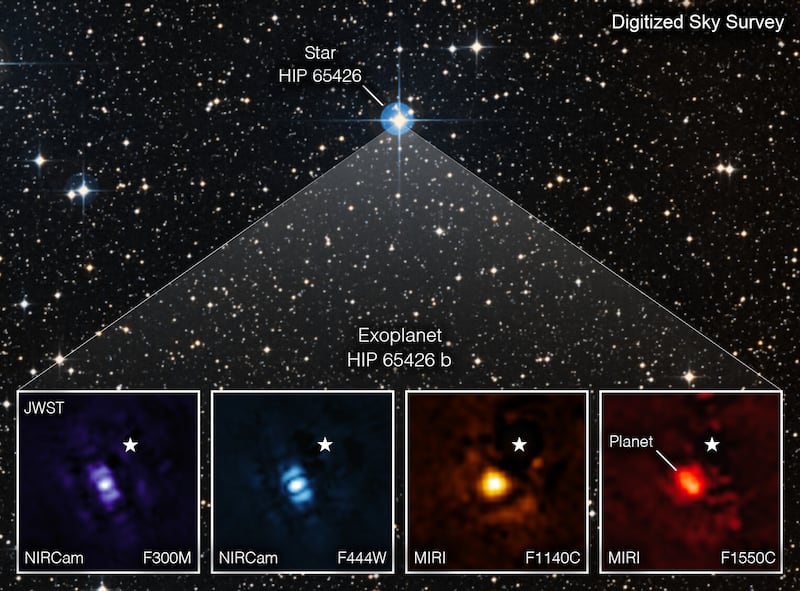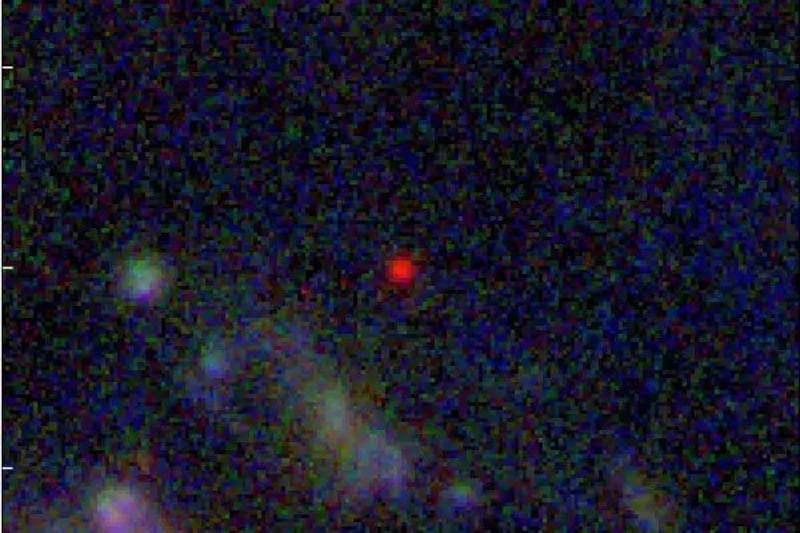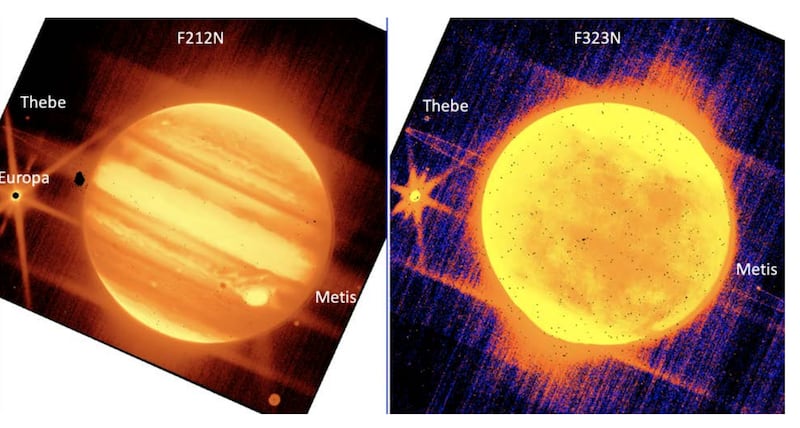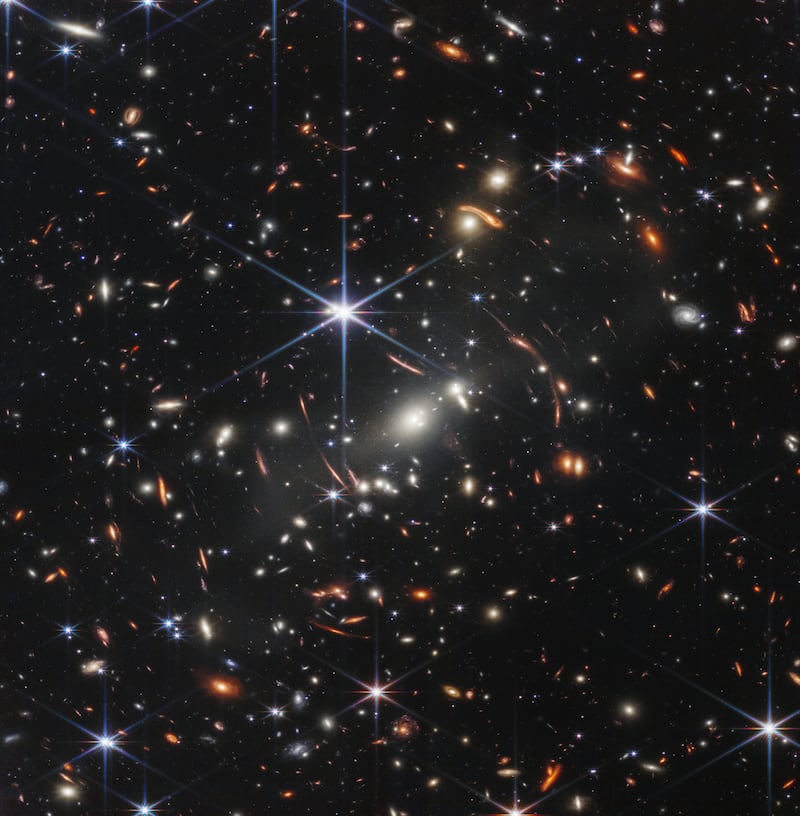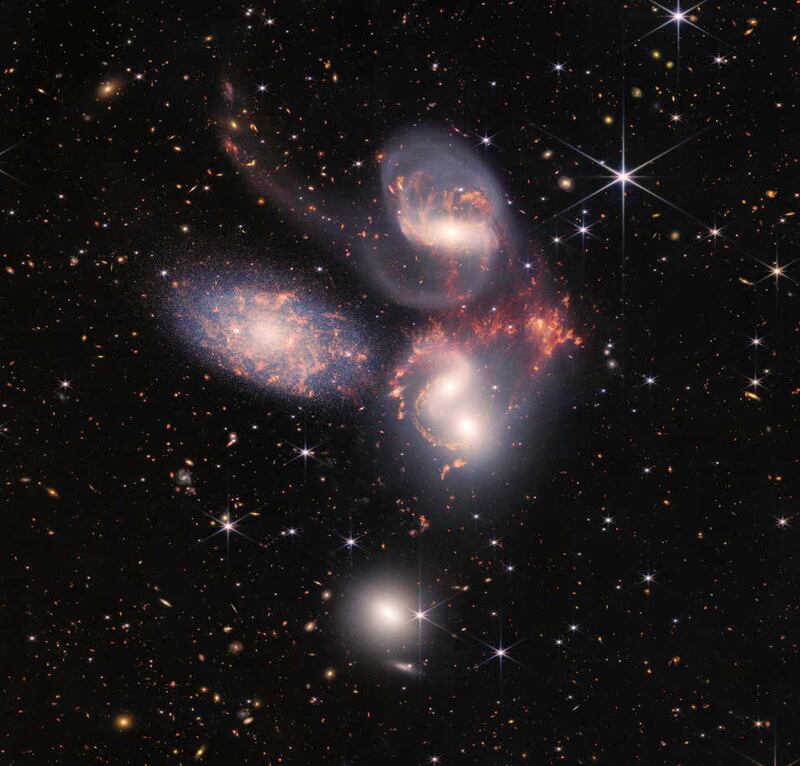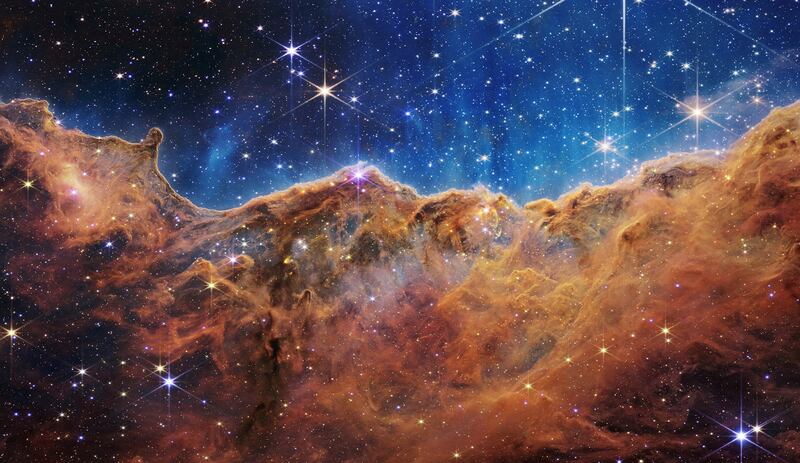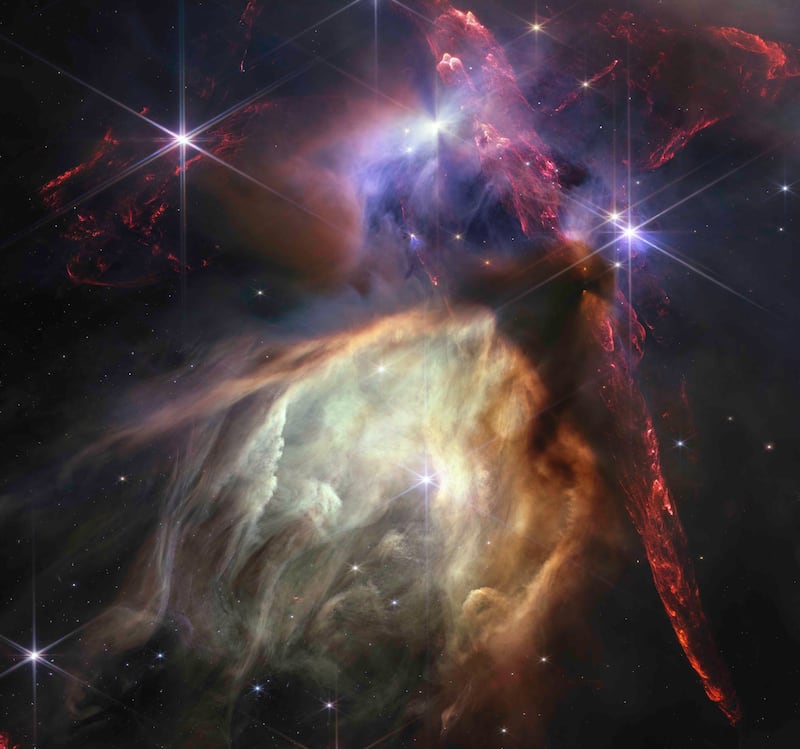Images captured by the James Webb Space Telescope have revealed new details of an early galaxy that formed in the first 400 million years of the universe.
Scientists first discovered galaxy MACS0647-JD through the Hubble Space Telescope, but the more advanced $10 billion Webb telescope has allowed them to see it in greater detail.
Astronomers at the European Space Agency, Johns Hopkins University and the University of Texas at Austin have been studying the galaxy and have found there could possibly be two galaxies in that same area of space.
“I discovered this galaxy MACS0647-JD 10 years ago with the Hubble Space Telescope,” said Dan Coe from the European Space Agency.
“With Hubble, it was just this pale, red dot. We could tell it was really small, just a tiny galaxy in the first 400 million years of the universe.
“Now we look with Webb and we’re able to resolve two objects.
“We’re actively discussing whether these are two galaxies or two clumps of stars within a galaxy. We don’t know, but these are the questions that Webb is designed to help us answer.”
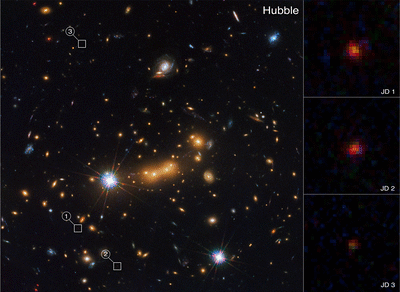
The massive gravity of galaxy cluster MACS0647 acts as a cosmic lens, bending and magnifying light from the more distant MAC0647-JD system.
This helps astronomers see the system more clearly than ever before.
Rebecca Larson from the University of Texas said that studying these galaxies can help them understand how they evolved through time.
“Up to this point, we haven’t really been able to study galaxies in the early universe in great detail,” she said.
“I think my favourite part is, for so many new Webb images we get, if you look in the background, there are all these little dots — and those are all galaxies. Every single one of them.”
The $10 billion Webb telescope was launched into space on Christmas Day last year and began its science operations this summer.
Since then, it has been beaming back stunning images that are helping scientists better understand the mysteries of the universe.
The first image from the telescope was revealed by US President Joe Biden on July 11. It showed the galaxy cluster SMACS 0723 as it was 4.6 billion years ago.
On July 20, it detected the oldest known galaxy in the universe, called Glass-z13, which was formed about 300 million years after the Big Bang 13.8 billion years ago.
